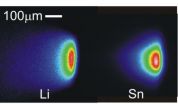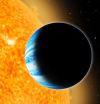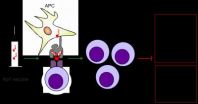(Press-News.org) Washington, D.C. (December 14, 2010) -- One of the rarest metals on Earth may be an excellent option for enabling future flash memory chips to continue to increase in speed and density, according to a group of researchers in Taiwan.
"Incorporating nanocrystals of iridium into the critical floating gate portion of flash memory designs shows both excellent memory properties as well as stability in the high temperatures used in processing such semiconductor devices," says the research team leader, Wen-Shou Tseng of Taiwan's Center for Measurement Standards, Industrial Technology Research Institute. The research results appears in the journal Applied Physics Letters, which is published by the American Institute of Physics. His colleagues included students and professor at the nearby National Chiao Tung University and Chung Hua University.
This team chose iridium -- a hard, dense and corrosion-resistant metal in the platinum family that is one of the rarest metals found in the earth's crust -- because unlike most alternatives, it has two desired properties: Iridium holds its electrons strongly (it has a high "work function", which is well-known to correlate with excellent memory properties), and its melting point of nearly 2,500 degrees Celcius is well beyond the 900 C annealing temperature that many chips must survive during manufacturing. Fortunately only a billionth of a billionth of a gram of iridium would be needed for each gate.
Researchers worldwide are investigating new ways to improve the popular flash memory, which is the nonvolatile memory chip design used in virtually all digital cameras and mobile electronics and, increasingly, in solid-state drives for laptop computers. The easiest way for future flash memories to hold more data and read/write faster, is to shrink the dimensions of the existing chip design, including the floating gate. But today's gate design has already progressed to the point where it cannot get much smaller before it can no longer retain the electrical charges that actually store the data. Nanocrystals have been proposed as a rather simple change that can improve memory chip performance without changing the tried-and-true floating-gate design.
In recent years, many different metals have been investigated for their nanocrystal potential. Nickel and tungsten, for example, are attractive for, respectively, a high work function and thermal stability. But they and other elements lack both needed properties. It is rare, indeed, that iridium has both needed qualities, Tseng says.
INFORMATION:
The article, "Formation of iridium nanocrystals with highly thermal stability for the applications of nonvolatile memory with excellent trapping ability" by Terry Tai-Jui Wang, Chang-Lung Chu, Ing-Jar Hsieh, and Wen-Shou Tseng appears in the journal Applied Physics Letters. See: http://link.aip.org/link/applab/v97/i14/p143507/s1
Journalists may request a free PDF of this article by contacting jbardi@aip.org
This work was funded by National Chiao Tung University.
ABOUT APPLIED PHYSICS LETTERS
Applied Physics Letters, published by the American Institute of Physics, features concise, up-to-date reports on significant new findings in applied physics. Emphasizing rapid dissemination of key data and new physical insights, Applied Physics Letters offers prompt publication of new experimental and theoretical papers bearing on applications of physics phenomena to all branches of science, engineering, and modern technology. Content is published online daily, collected into weekly online and printed issues (52 issues per year). See: http://apl.aip.org/
ABOUT AIP
The American Institute of Physics is a federation of 10 physical science societies representing more than 135,000 scientists, engineers, and educators and is one of the world's largest publishers of scientific information in the physical sciences. Offering partnership solutions for scientific societies and for similar organizations in science and engineering, AIP is a leader in the field of electronic publishing of scholarly journals. AIP publishes 12 journals (some of which are the most highly cited in their respective fields), two magazines, including its flagship publication Physics Today; and the AIP Conference Proceedings series. Its online publishing platform Scitation hosts nearly two million articles from more than 185 scholarly journals and other publications of 28 learned society publishers.
Washington, D.C. (December 14, 2010) -- The manufacturing of semiconductor wafers used in all types of electronics involves etching small features onto a wafer with lasers, a process that is ultimately limited by the wavelength of the light itself. The semiconductor industry is rapidly approaching this fundamental limit for increasing the speed of the microchip. The development of a new intense 13.5-nm (extreme ultraviolet or EUV) light source will resolve this issue by reducing the feature size by an order of magnitude or so, according to Purdue researchers in the Journal ...
Washington, D.C. (December 14, 2010) -- Moving a step closer toward quantum computing, a research team in the Netherlands recently fabricated a photodetector based on a single nanowire, in which the active element is a single quantum dot with a volume of a mere 7,000 cubic nanometers. The device is described in the American Institute of Physics' journal Applied Physics Letters.
Photodetectors based on single quantum dots are expected to find uses in optoelectrical interfaces in future quantum computers, where single photons will carry information over long distances and ...
The performance of a brain-machine interface designed to help paralyzed subjects move objects with their thoughts is improved with the addition of a robotic arm providing sensory feedback, a new study from the University of Chicago finds.
Devices that translate brain activity into the movement of a computer cursor or an external robotic arm have already proven successful in humans. But in these early systems, vision was the only tool a subject could use to help control the motion.
Adding a robot arm that provided kinesthetic information about movement and position ...
Washington, D.C. (December 14, 2010) -- While the causes of epileptic seizures continue to confound brain researchers, scientists have been exploring how changes in the coordinated activity of brain networks, as monitored through electrodes, might help predict impending seizures. A report in the American Institute of Physics' journal CHAOS offers new insight into this possibility.
Two properties are commonly used to measure fluctuations in the activity of a brain network; one, known as L, relates to the overall connectedness between the activities of brain regions (or ...
In an exciting example of international collaboration, a Qatar astronomer teamed with scientists at the Harvard-Smithsonian Center for Astrophysics (CfA) and other institutions to discover a new alien world. This "hot Jupiter," now named Qatar-1b, adds to the growing list of alien planets orbiting distant stars. Its discovery demonstrates the power of science to cross political boundaries and increase ties between nations.
"The discovery of Qatar-1b is a great achievement - one that further demonstrates Qatar's commitment to becoming a leader in innovative science and ...
JAMBI, Indonesia – A Sumatran rainforest named a global priority for tigers and home to a unique orangutan rescue project is targeted for clearcutting by one of the world's largest paper suppliers.
An investigation found that since 2004, companies affiliated with Asia Pulp & Paper/Sinar Mas Group have sought out selective logging concessions with dense natural forests in the Bukit Tigapuluh landscape. The companies obtained government licenses to switch the forest status to industrial timber plantation concessions, sometimes under legally questionable circumstances. ...
TUCSON, Ariz. (Dec. 14, 2010) -- A unique underground surveillance system tested by UA researchers could be used to watch the entire U.S.-Mexico border continuously.
The border-monitoring system, known as Helios, consists of laser pulses transmitted through fiber-optic cables buried in the ground that respond to movements on the surface above. A detector at one or both ends of the cable analyzes these responses. Helios is sensitive enough to detect a dog and can discriminate between people, horses and trucks. The system can be set to avoid being triggered by small animals, ...
YOUR BODY'S OWN VACCINE: Researchers at BRIC, the University of Copenhagen, have discovered for the first time a protein normally found in the body that can act to prevent chronic tissue inflammation. When administered in the form of a therapeutic vaccine it is able to effectively prevent and treat a number of different inflammatory disease models for multiple sclerosis (MS), rheumatoid arthritis (RA), skin hypersensitivity and allergic asthma (AA).
The article, entitled, "Endogenous collagen peptide activation of CD1d-restricted NKT cells ameliorates multiple tissue-specific ...
High-speed trains consume 29% less energy than conventional trains per passenger transported, and reduce CO2 emissions by the same proportion. These are the conclusions of a study by the Spanish Railways Foundation published in the journal Transportation Research Record.
"A high speed train operating in normal conditions consumes less energy and produces less CO2 emissions per passenger transported (on average 29% less) than a conventional train travelling between the same two points at a lower speed", Alberto García, author of the study and a researcher at the Spanish ...
Scientists investigating the allergic reactions that asthmatics suffer towards a common mould have discovered that many people with asthma actually had the mould growing in their own lungs.
The research led by University of Leicester scientists at Glenfield Hospital has been published in the December 2010 issue of the American Journal of Respiratory and Critical Care Medicine.
The team based in the Institute for Lung Health at the University of Leicester and Glenfield Hospital examined the impact on asthmatics of a common environmental mould, Aspergillus fumigates, ...




